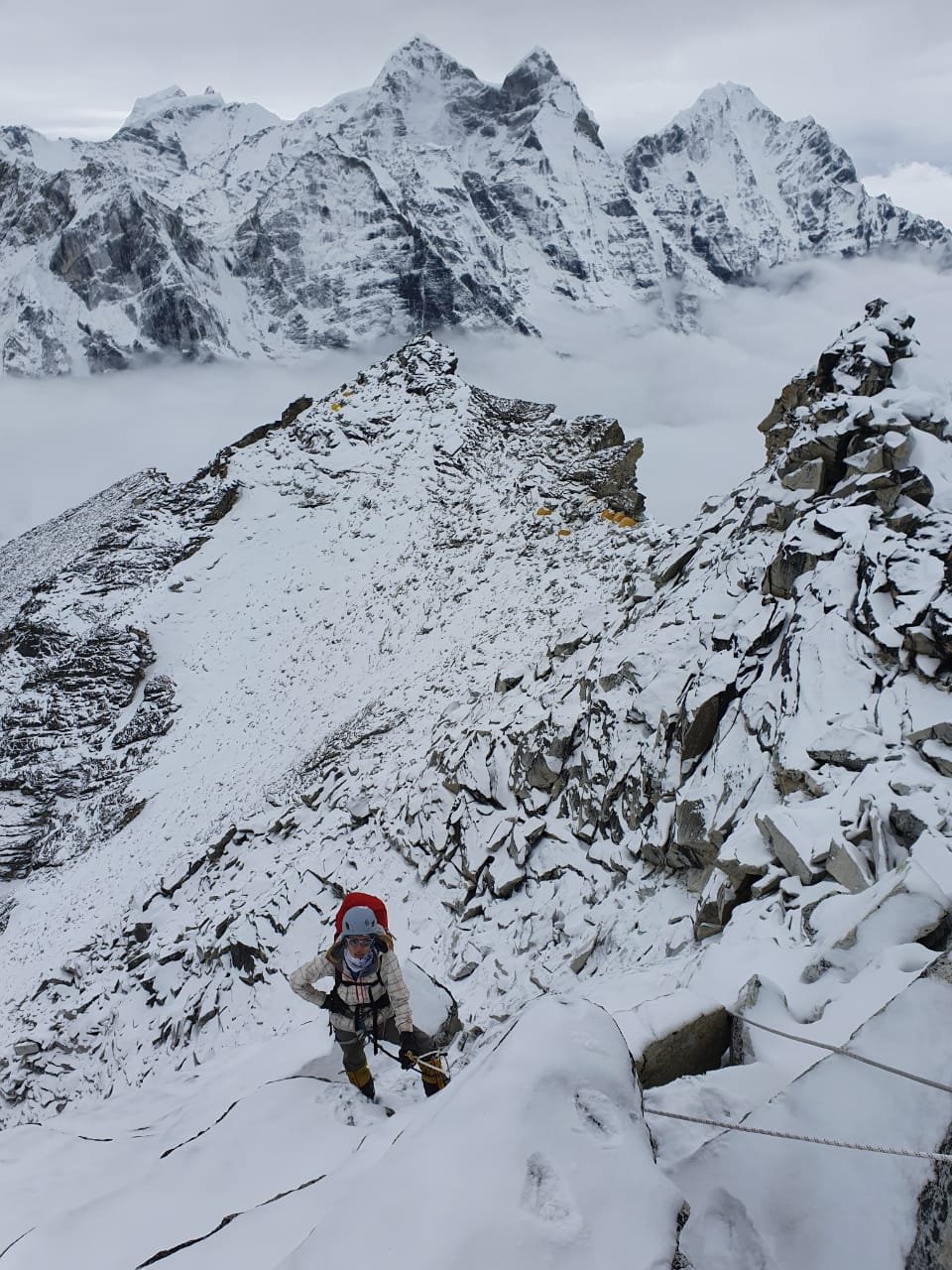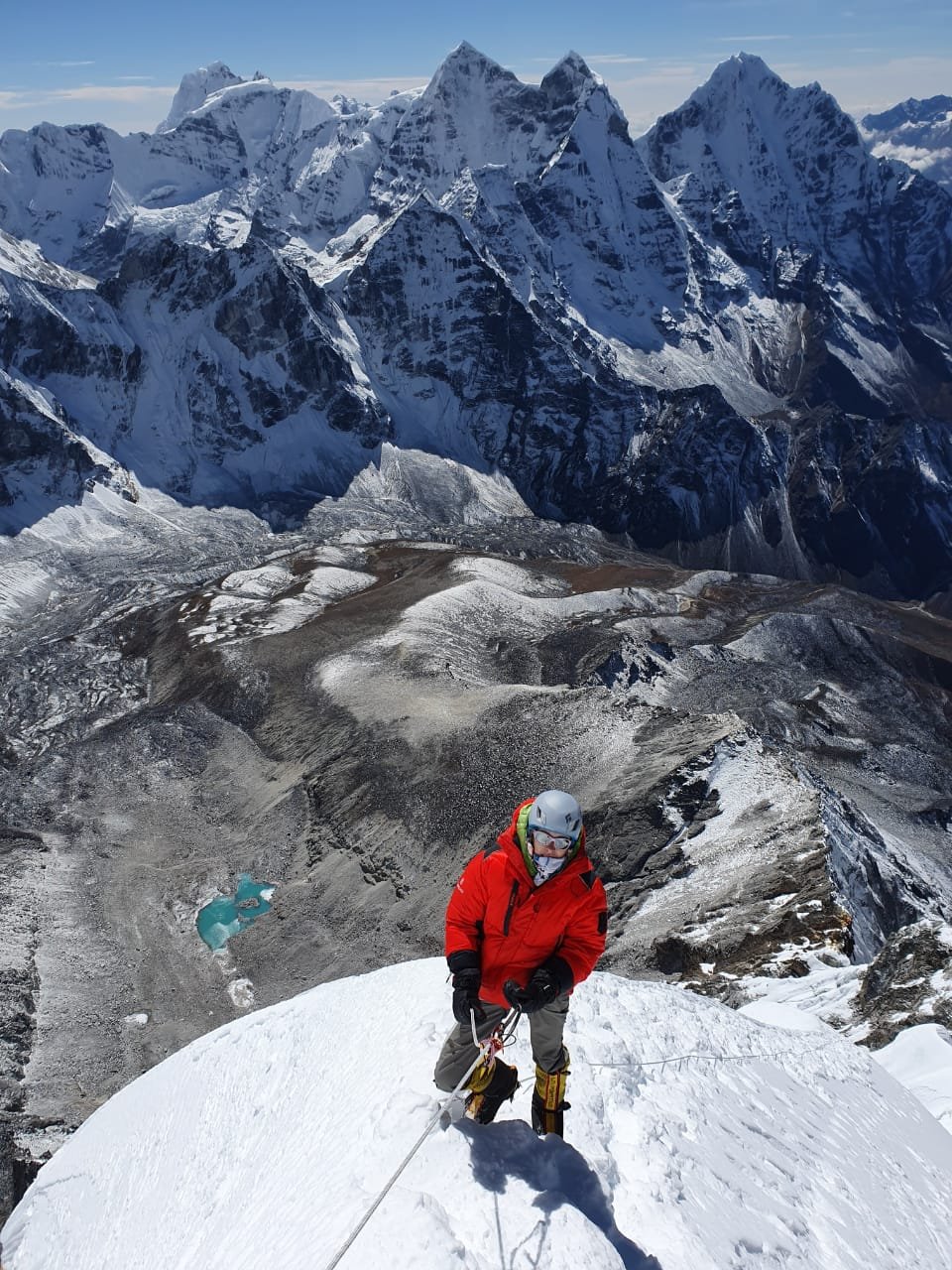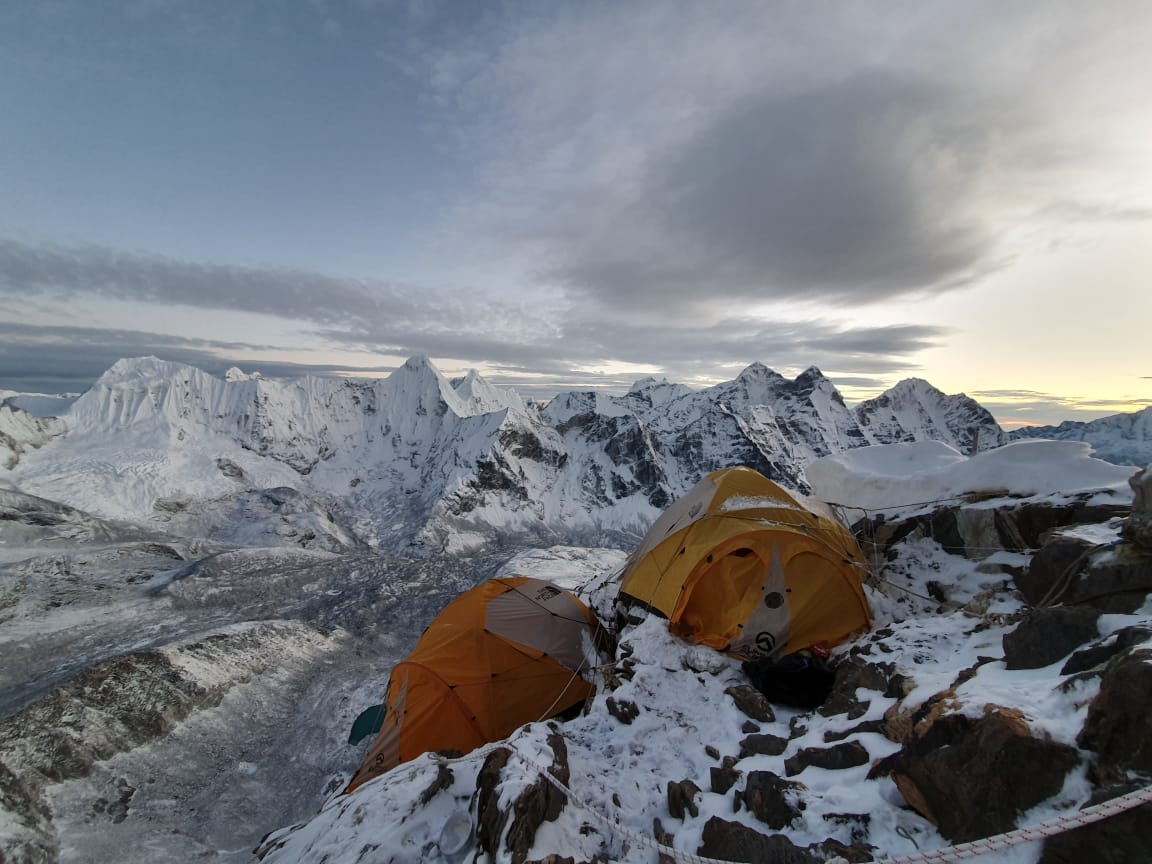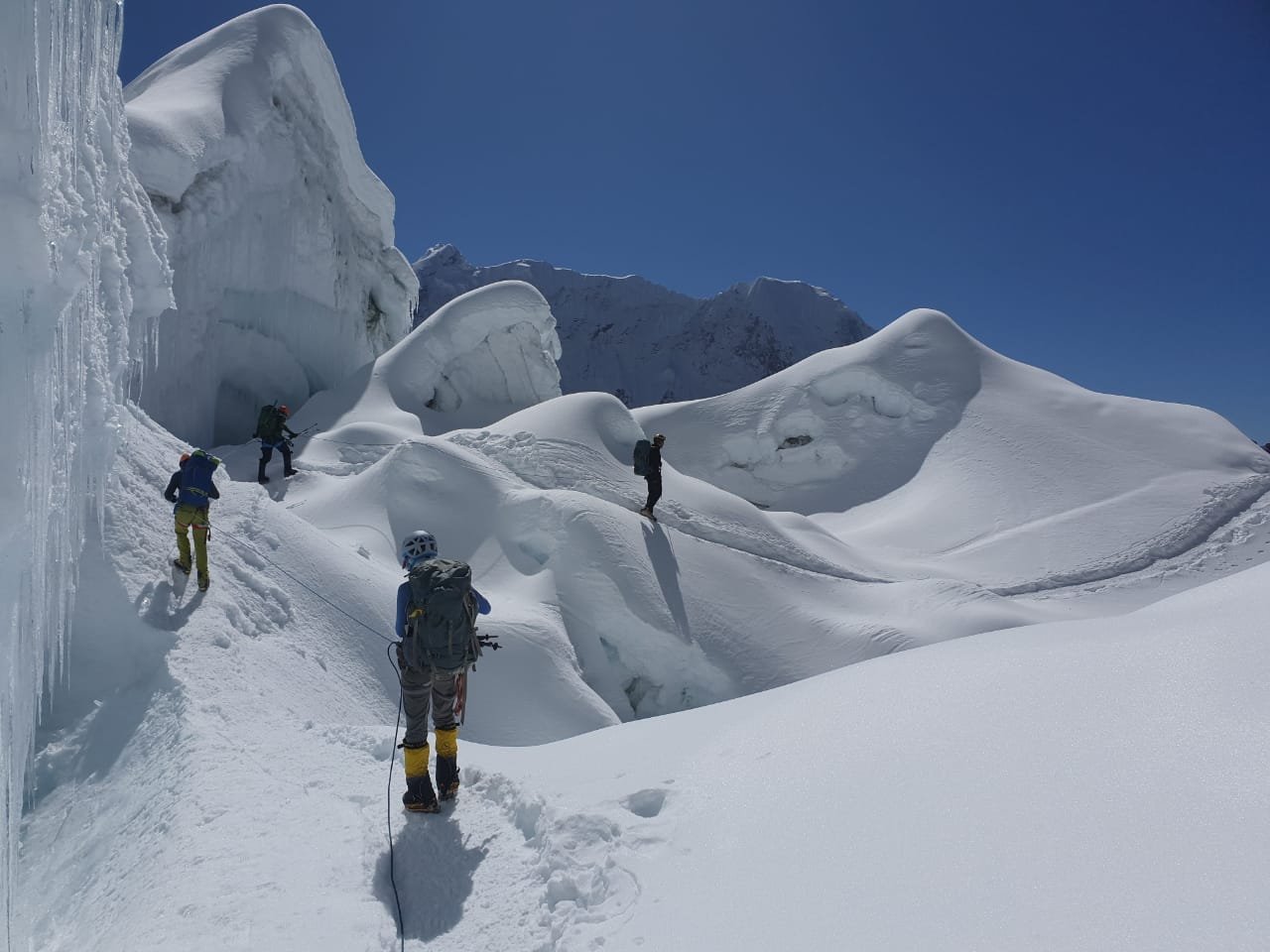Life in the “death zone” and reader Q&A
October. The Halloween, the day of the year associated with death in many cultures. Let’s talk about death. I am writing this at the gym where I go for training everyday to NOT die. Many friends comment that I am very nonchalant when I talk about death. I climb mountains with double digit death rates and death is just statistics to me. I had several friends die in the mountains. I still have hard time thinking straight when I receive news about the avalanches and rescues because many of my friends are there on the mountain at that time.
Ama Dablam which I climbed around same time three years ago was the mountain where I realized I had no fear of death. It was the closest call in the last 12 years of climbing. A technical climb. I started falling when the anchor pulled out. Everything slowed. I was not falling on snow, there were rocks everywhere and I knew if I were unlucky I would hit the rock and break something or else. Same time a year earlier our friend’s brother died the same way. All thoughts stopped. Time slowed down. Ever go scuba diving? You know that first feeling of slow and thick silence you get in your ears when you start descending? Or, if you ever had anesthesia? Your brain goes to sleep, all thoughts stop running in your head and you simply stop caring. Everything becomes irrelevant. You feel light and free.
Now, if we only learned to live our lives like that.
No fear.
Nothing happens when you are falling.
Nothing happens when you lose everything. You just find yourself in new circumstances and learn to use the new situation to your advantage. You never run out of strength, opportunities, and vital powers. There are so many trails to the summit. And sometimes they are not even hard. Just prepare, train, and try. Walk and enjoy the view, without overthinking.
It’s all so simple.
“Death Zone” questions from one of the readers. All related to oxygen. Because oxygen above 8,000 meters in the “death zone” means life. Are you ready?
- How much oxygen do you bring on an expedition per person? Depends on the mountain. Each route is different. More difficult climbs require more oxygen usage since you are working harder. Usually 2-3 tanks and one extra hidden somewhere on the mountain just in case.
- When you have sherpas that can get you to base camps and have tea houses to stay along the way (like for Everest) I imagine bringing O2 is much easier. How about when YOU have to carry it into places like K2 or Annapurna? Do you bring less O2 to K2 and Annapurna? There are also porters, animals, and helicopters. That is not a problem. You can even get the beer delivered, but you pay 10x per can) Oxygen too, by the way. If you prepay for the tank, it’s $500. If you are on the mountain and you decide you need an extra tank, it’s $5,000 (never happened to me so this is unchecked info).
- How high do YOU climb unassisted without O2? Usually up to 7,000 m. You have to decide from the very beginning if you are climbing with or without O2. Because if you start acclimatizing with O2 you cannot change your mind later, your body won’t be adjusted properly.
- When you use O2 do you thin it out to a mixture that would be similar to 18k feet of elevation? 24k? 26k? The impact is reduced by about 1,500 feet so when I am breathing O2 at 8,000 my body thinks we are at 7,500. Which means I still have to be trained to be able to perform at 7,000+ no matter what. There is no magic pill. I still have to put the effort in. O2 does not eliminate work. It just keeps my body warmer and I get less tired so I can walk faster.
- How long does a tank of oxygen last? If you make a final ascent on an 8kM mountain and it’s a 15 hour round trip, what happens if the weather gets bad and you’re delayed? Do people run out of O2? (I’m imagining this is one of the reasons dead bodies are all over these mountains). Usually oxygen tanks are planted by the sherpas along the way, the same spots every year. All sherpas present on the mountain know where the tanks are. I usually ask mine where my oxygen is in case I lose my sherpa. Unlike with the scuba diving tank where you cannot adjust the usage, with the climbing tank there is a regulator and you can adjust the oxygen flow, from 1 l/min to 4 l/m. Sherpas walk on 0.5 l/m because they are strong, acclimatized, and genetically have a different blood composition due to living at altitude. Average climber walks on 2 l/m, if you are waiting on the trail (or sleeping), you set it down to 0.5 l/m-1 l/m, if you are climbing a difficult wall you go up to 3 l/m. 4 l/m is a lot. On the descend if you have leftover oxygen and you go up to 4 l/m, it is called “an oxygen party”, you get high. Based on your estimated speed you can plan your usage. If you miscalculate, you are right, the party is over. So knowing math is helpful!
- At what different elevations do you stop and take time to acclimate? The camps are set in the same spot every year, usually 3-4 camps at 6k, 7k, 8k. But again, depends on the mountain.
- How long do you typically spend acclimatizing at each of these stops? As a side note, I read somewhere that it takes about 36 days for a solid and in shape mountaineer to prepare for 26k feet of elevation. Again, it depends. The rule is to climb high, sleep low. Rotation 1 is to sleep one night at Camp 1 and go down. Rotation 2 is to sleep one night at Camp 1, one night at Camp 2 and then go down. Then you rest at Base Camp and wait for the weather window for the final summit push which lasts about 4-5 days, when we spend 1 night at each camp. 36 days for acclimatization sounds too long, that “in shape mountaineer” is really out of shape)) There are ways to speed up the process – take more iron, some take diamox. I slept in the oxygen tent at home for 4 weeks before K2. Plus, I lived in Tahoe at 1,800 m for 6 months before the expedition, went hiking every other day with my 40 lbs weight vest. My body was adjusted, I did not feel any altitude (not even a headache) when I was on K2.
- From what I have read, the human body cannot take in enough O2 (without a tank) at 8kM or above to maintain bodily functions and the body functions start deteriorating. I know different people react differently and some get cerebral edema or pulmonary edema and or other problems (euphoria, etc), but how long, realistically, can a climber like you survive at 8km or above, without O2. I took my mask off at 8,300 m (high camp on Everest) just to see what happens, I lasted 1 minute, then started falling asleep. So not long.
Every first Saturday of the month at 9 am PT/noon ET I hold a 1.5 hrs ‘Reach Any Summit’ Masterclass – Building and Monetizing Your Mindset. Every month there is a new topic that we cover from 4 main categories: Purpose/Mindset/Personal Brand; Goal-setting and productivity hacks; Risk taking and dealing with fear; Monetizing your mindset. You can join for just one session and see if this is for you. Email me to find out the next month’s topic.
Attend the Masterclass



Every first Saturday of the month at 9 am PT/noon ET I hold a 1.5 hrs ‘Reach Any Summit’ Masterclass – Building and Monetizing Your Mindset. Every month there is a new topic that we cover from 4 main categories: Purpose/Mindset/Personal Brand; Goal-setting and productivity hacks; Risk taking and dealing with fear; Monetizing your mindset. You can join for just one session and see if this is for you. Email me to find out the next month’s topic.
Check out the Masterclass
Popular posts on similar topic:
- Why laziness is good for you
- Handling procrastination
- Surviving is just a habit
- How to not give up
- Goal-setting 101
- Simple tips on how to reach your hardest summits – UC Berkeley Haas lecture
- I spent 20 min on top of Mt Everest. Here is what I learned about the meaning of life
- Thrive Global: Olga’s interview with Parveen Panwar, Mr. Activated
- Self-leadership lecture at UW Foster Executive MBA
- Mt K2 expedition notes
- Annapurna I expedition notes
- Mt Kenya expedition
- Building and Monetizing Your Mindset: monthly LIVE Masterclass
About the author:
Olga Koroleva is a founder and CEO of Capital Brain, a company that builds AI-powered products. She is also a high-altitude mountaineer who likes to climb mountains with double-digit death rates, University lecturer, and a public speaker on leadership and risk taking. Sign up to her self-leadership newsletter at https://capitalbrain.co/blog/

